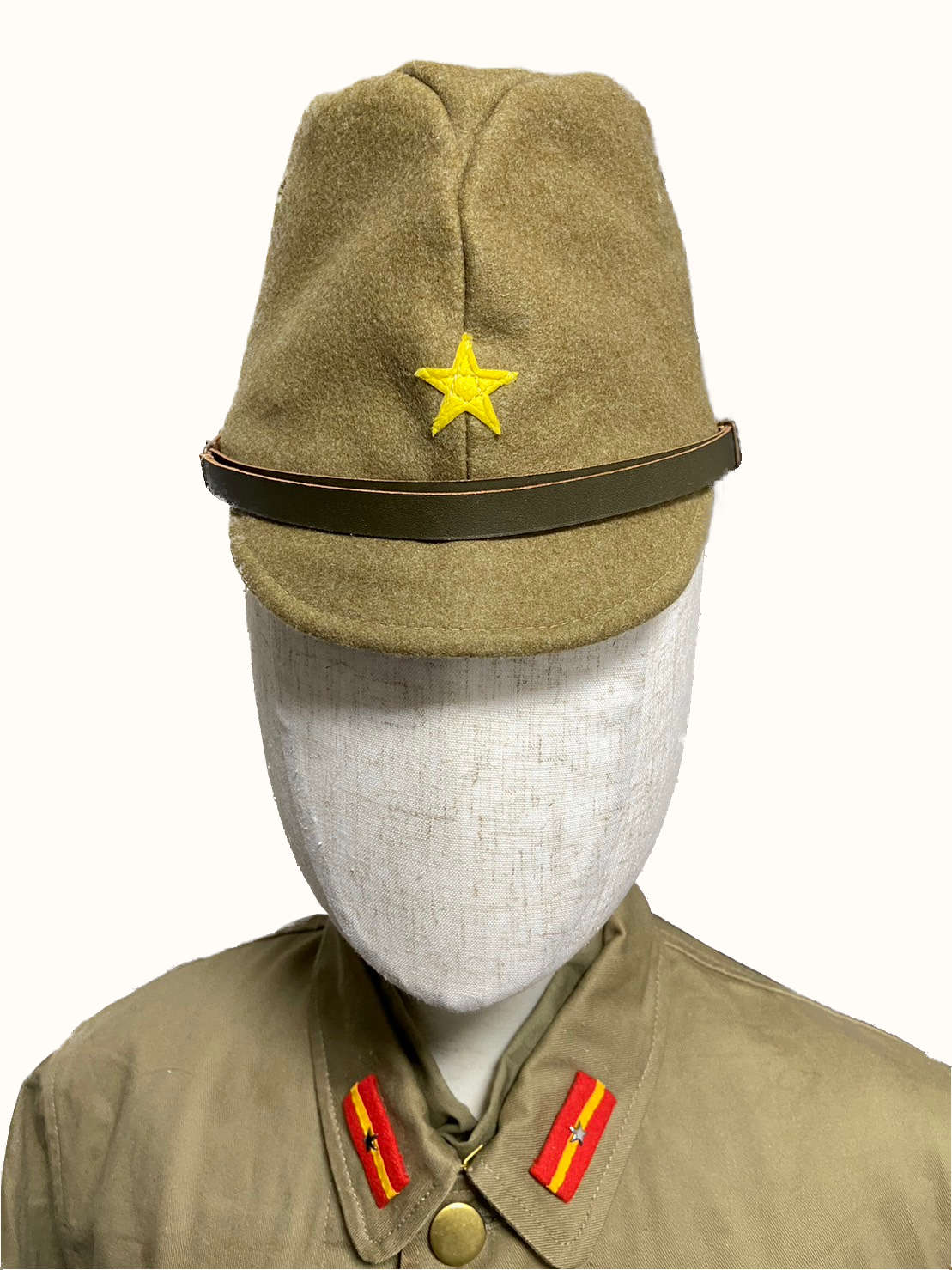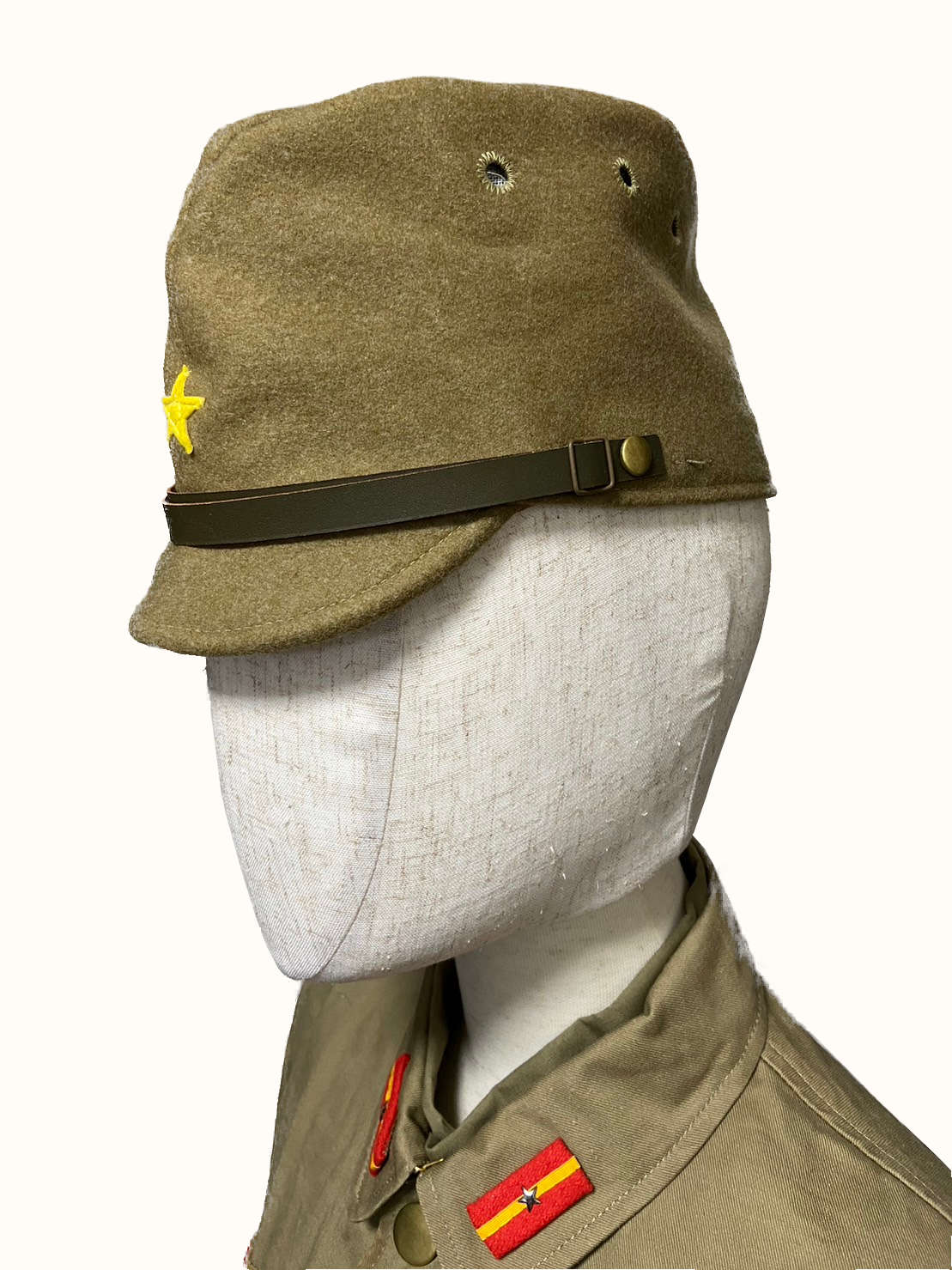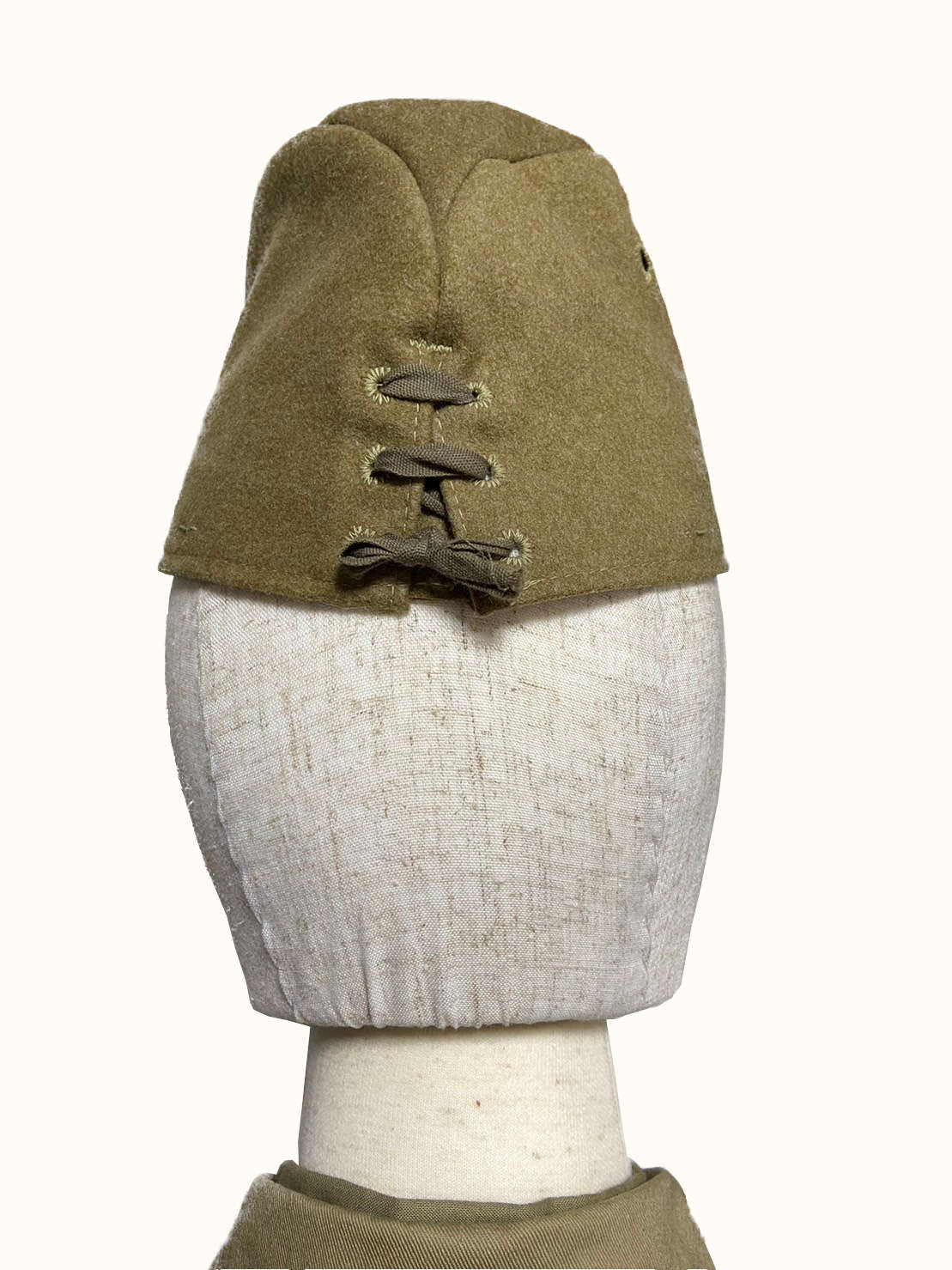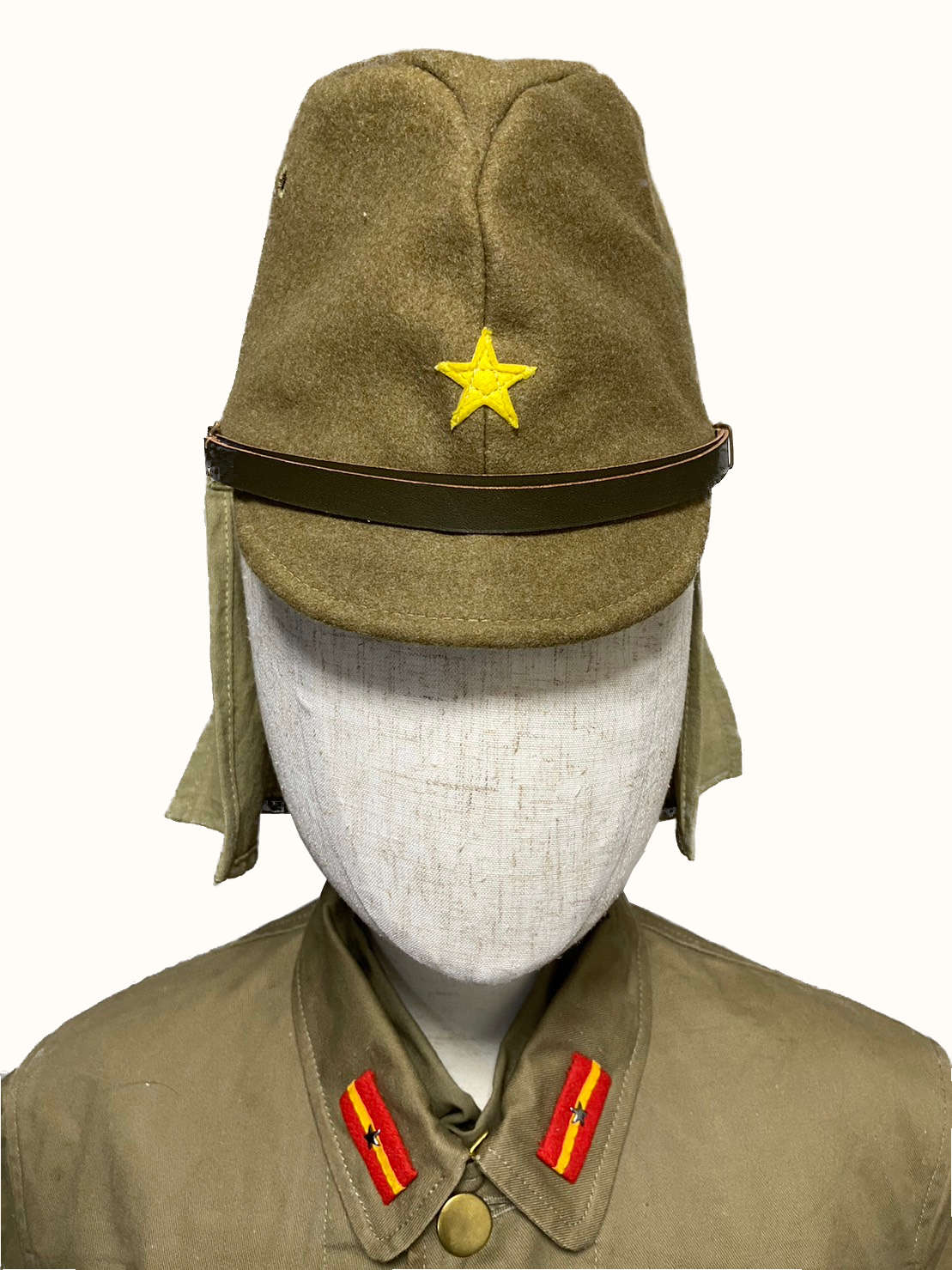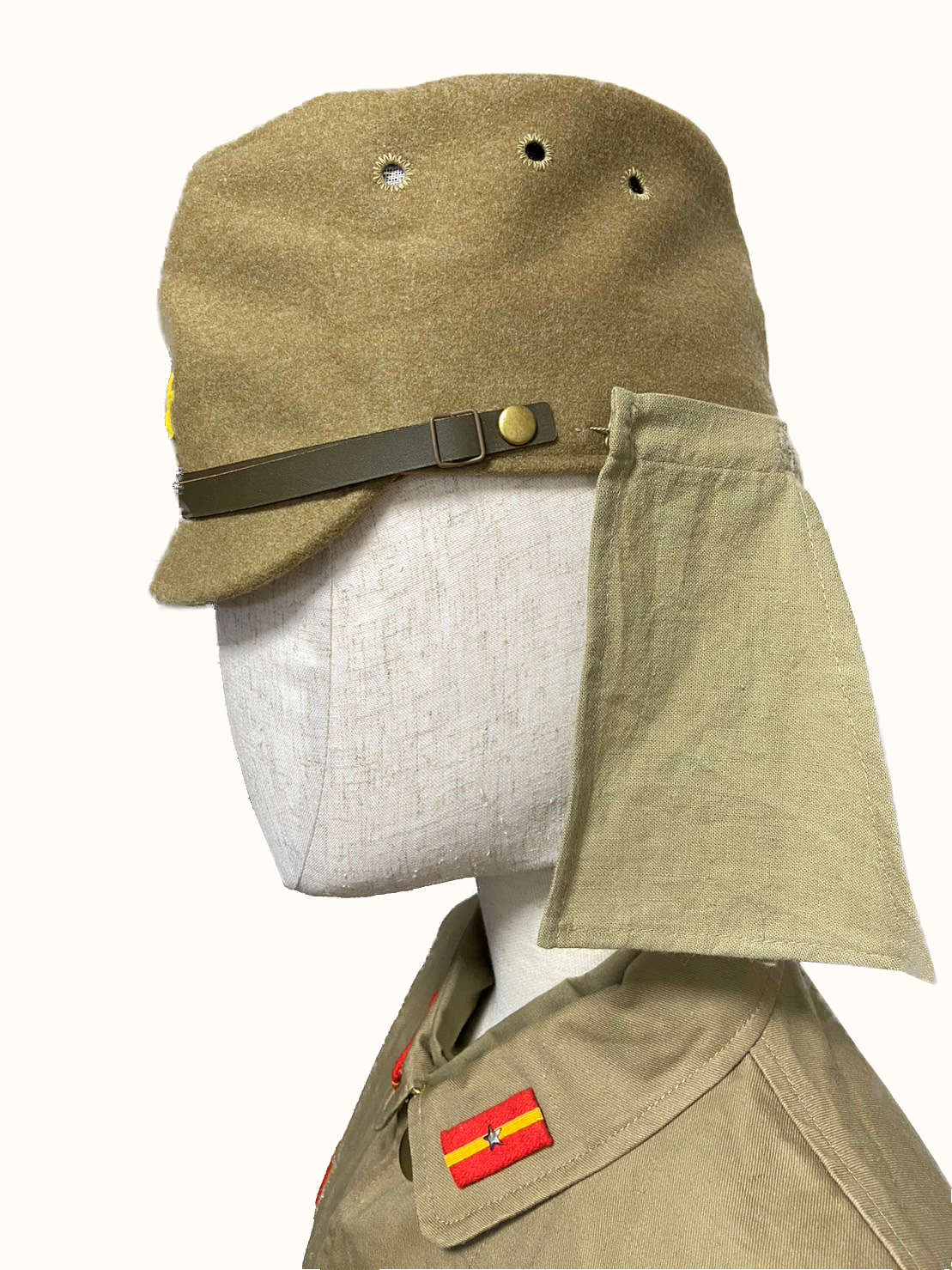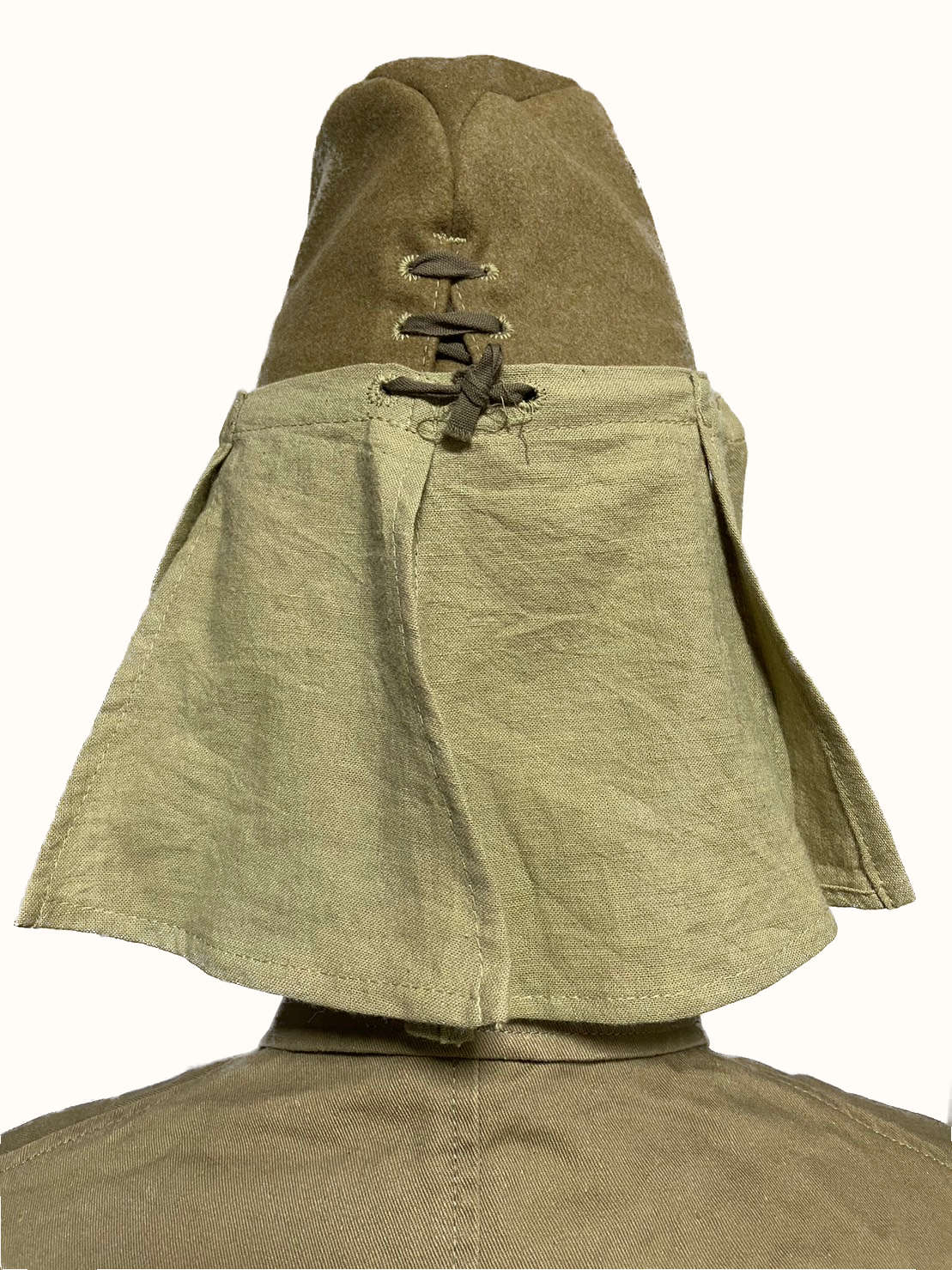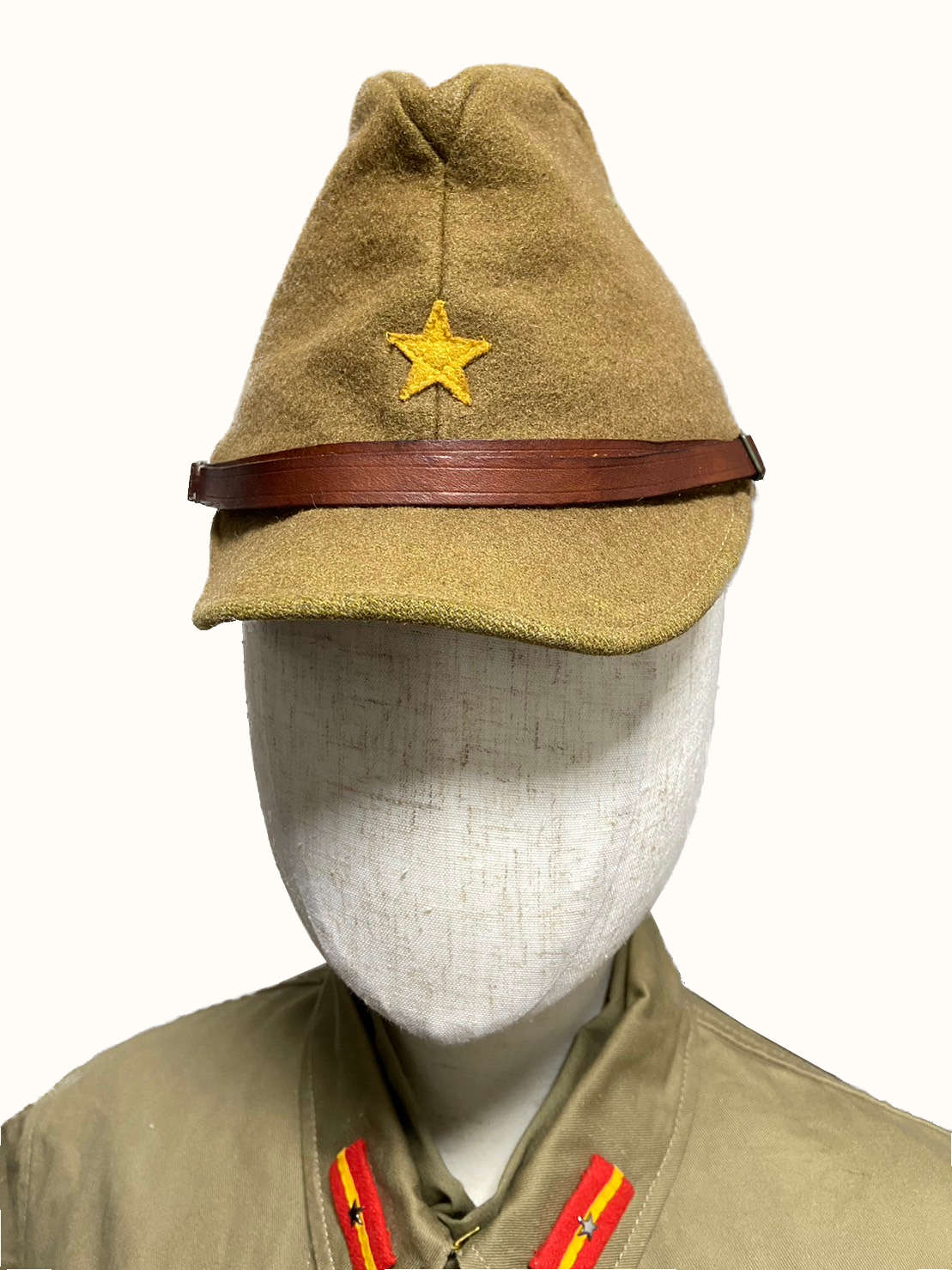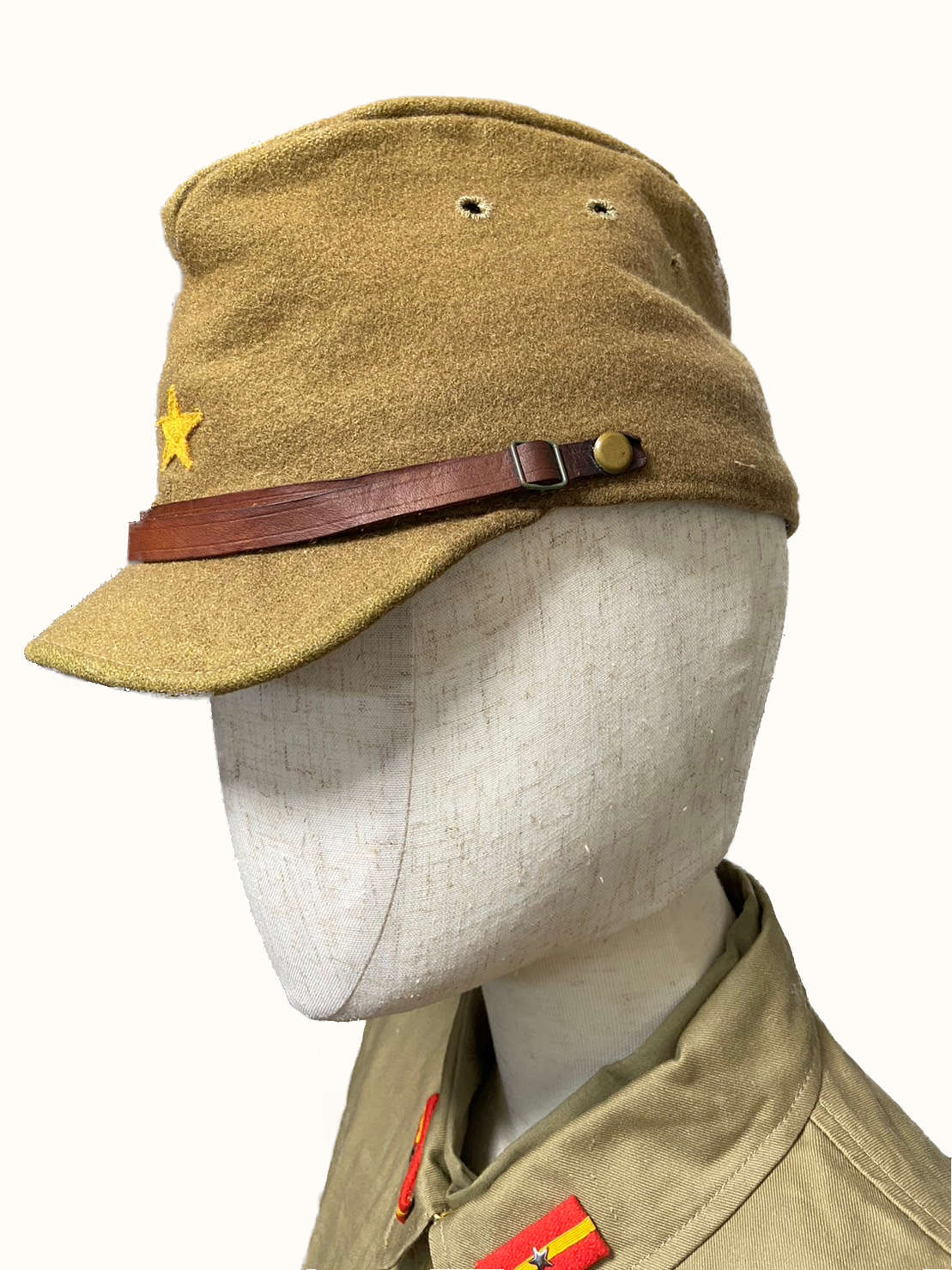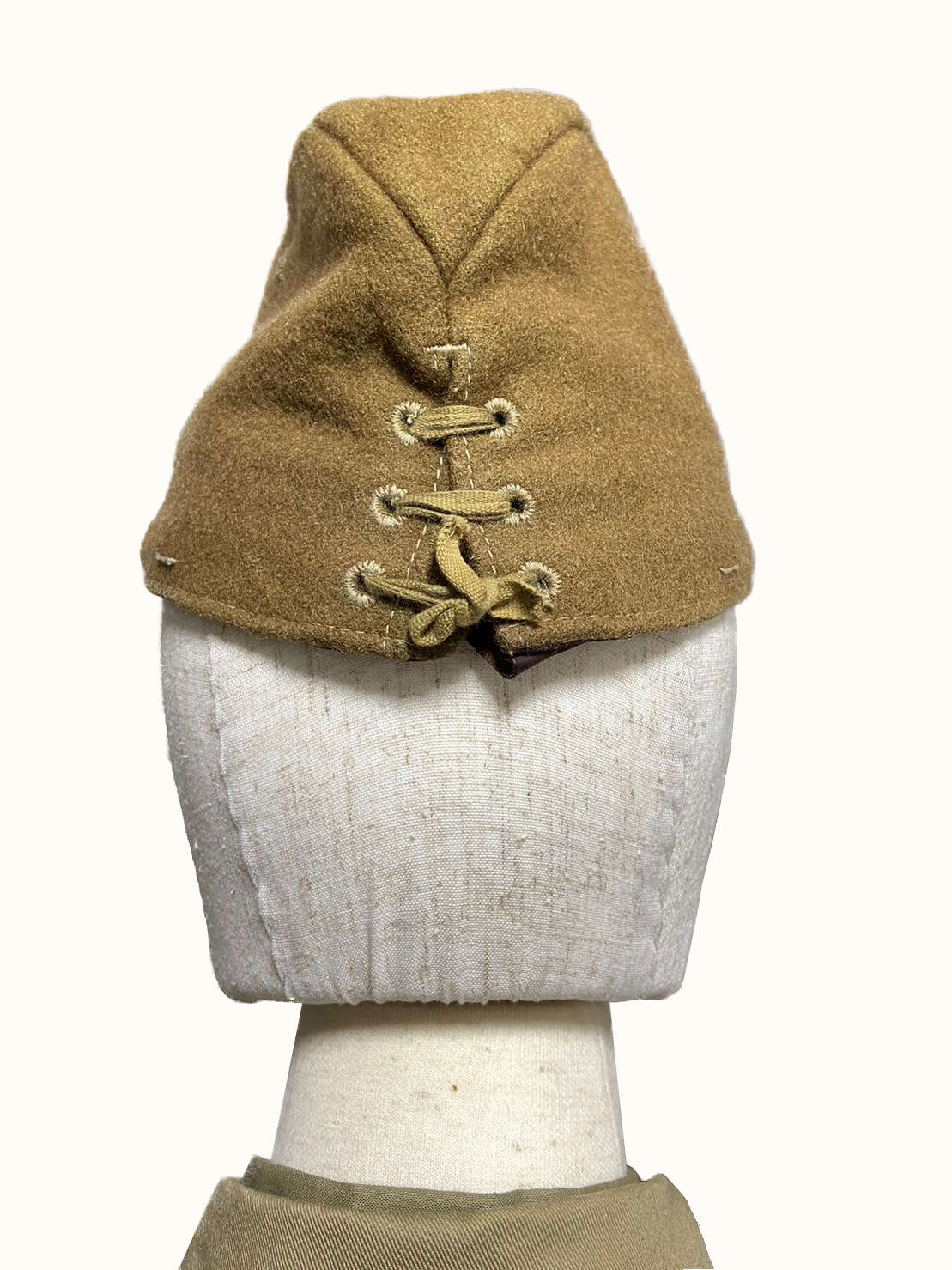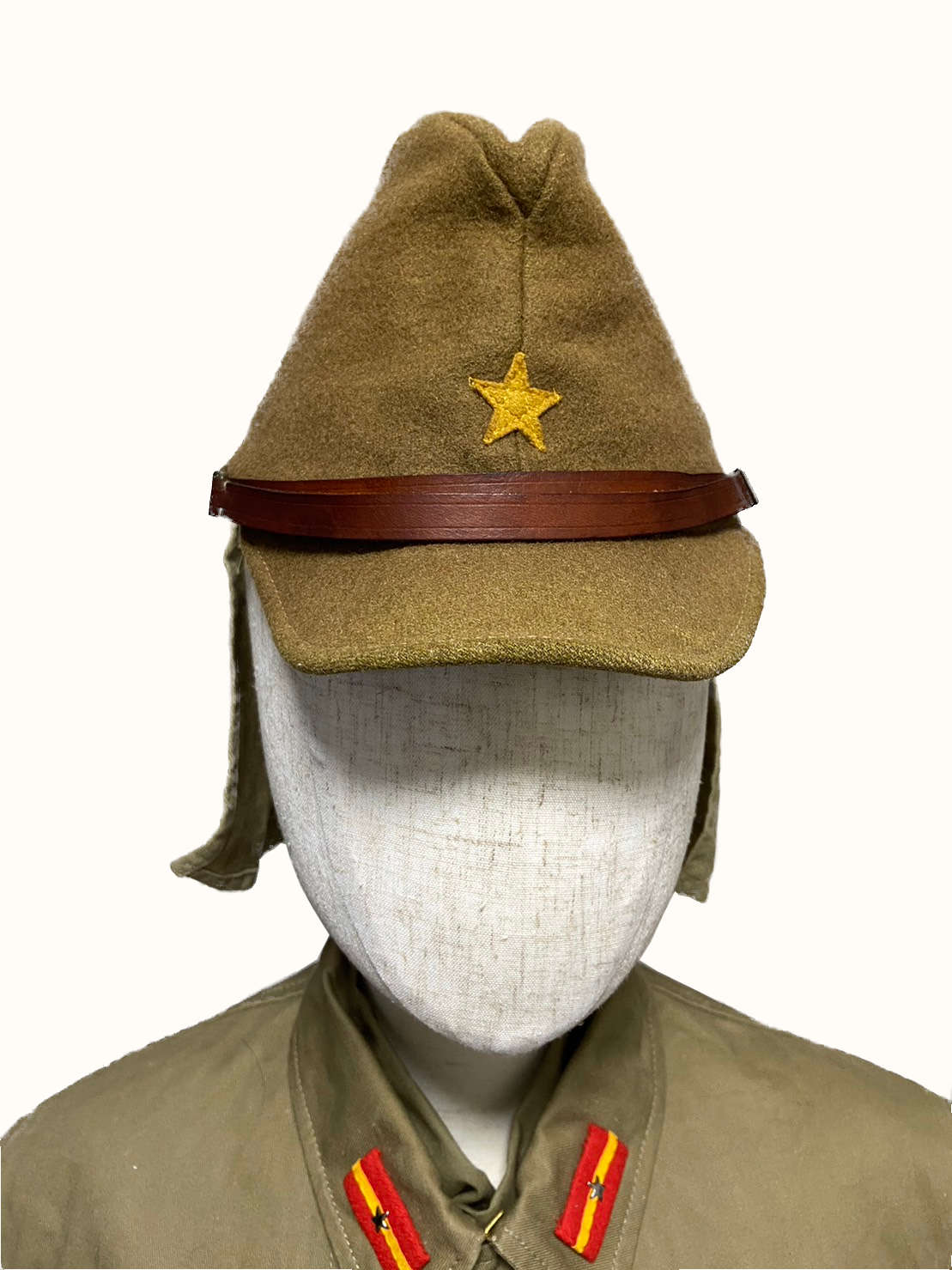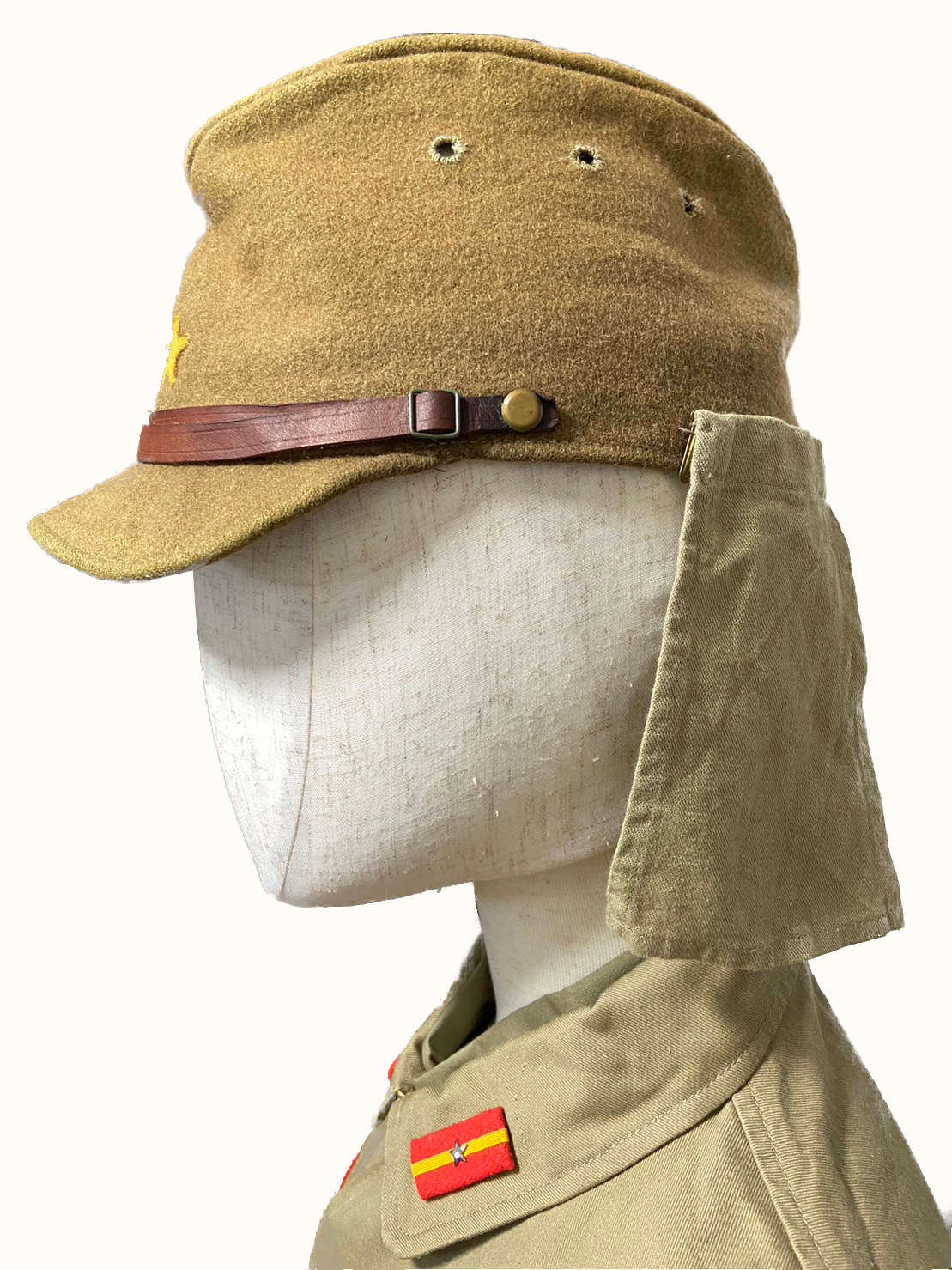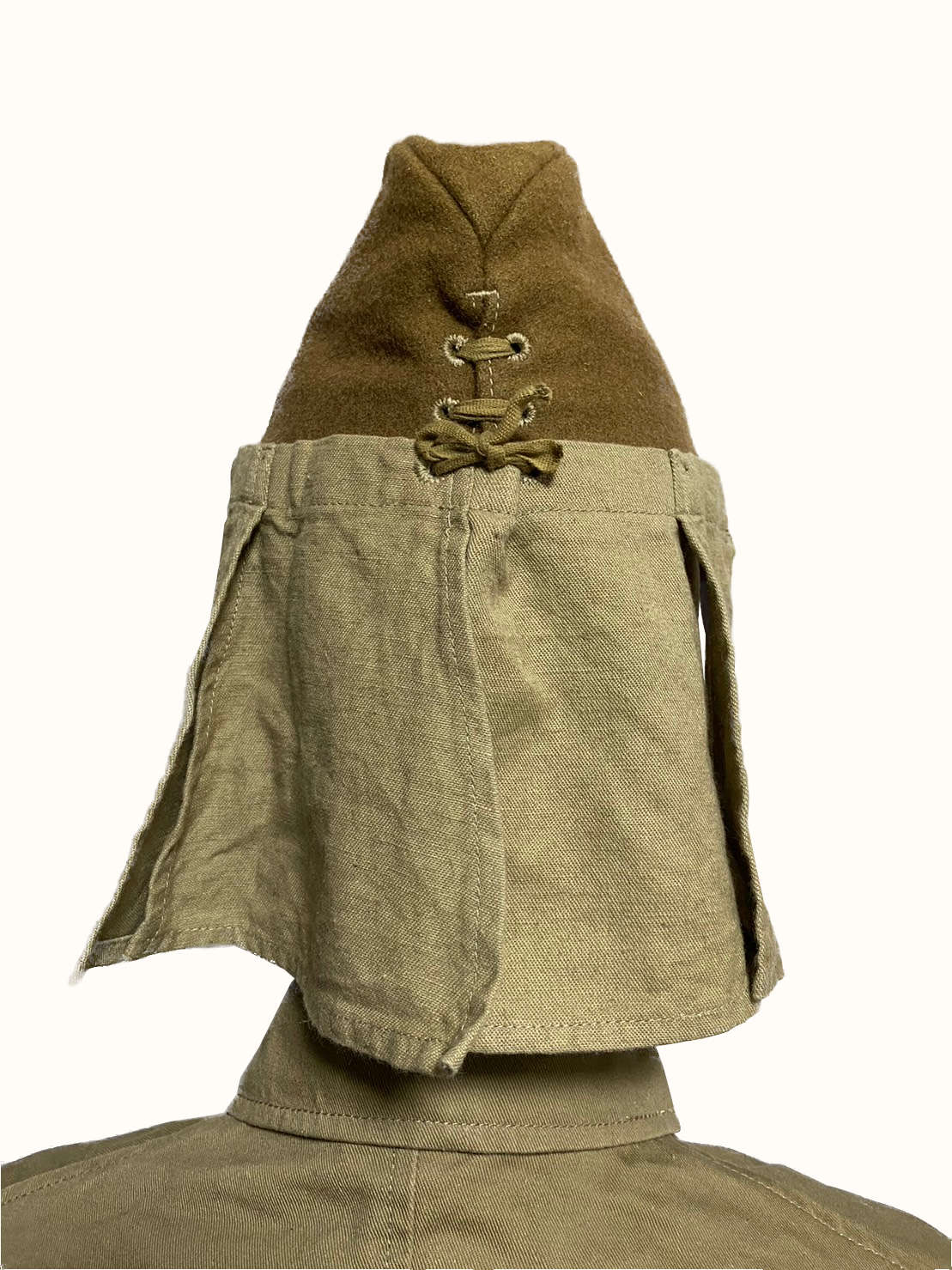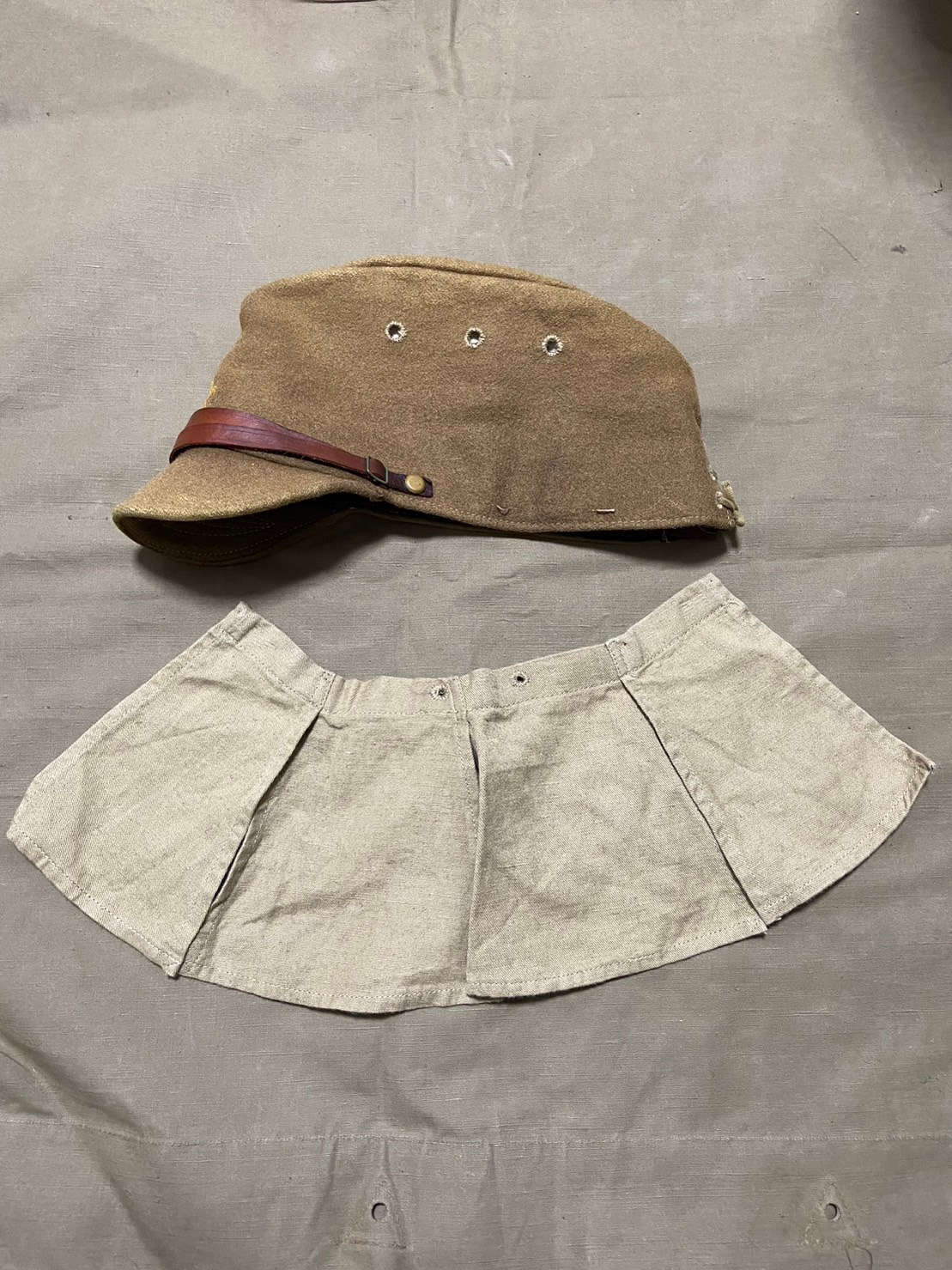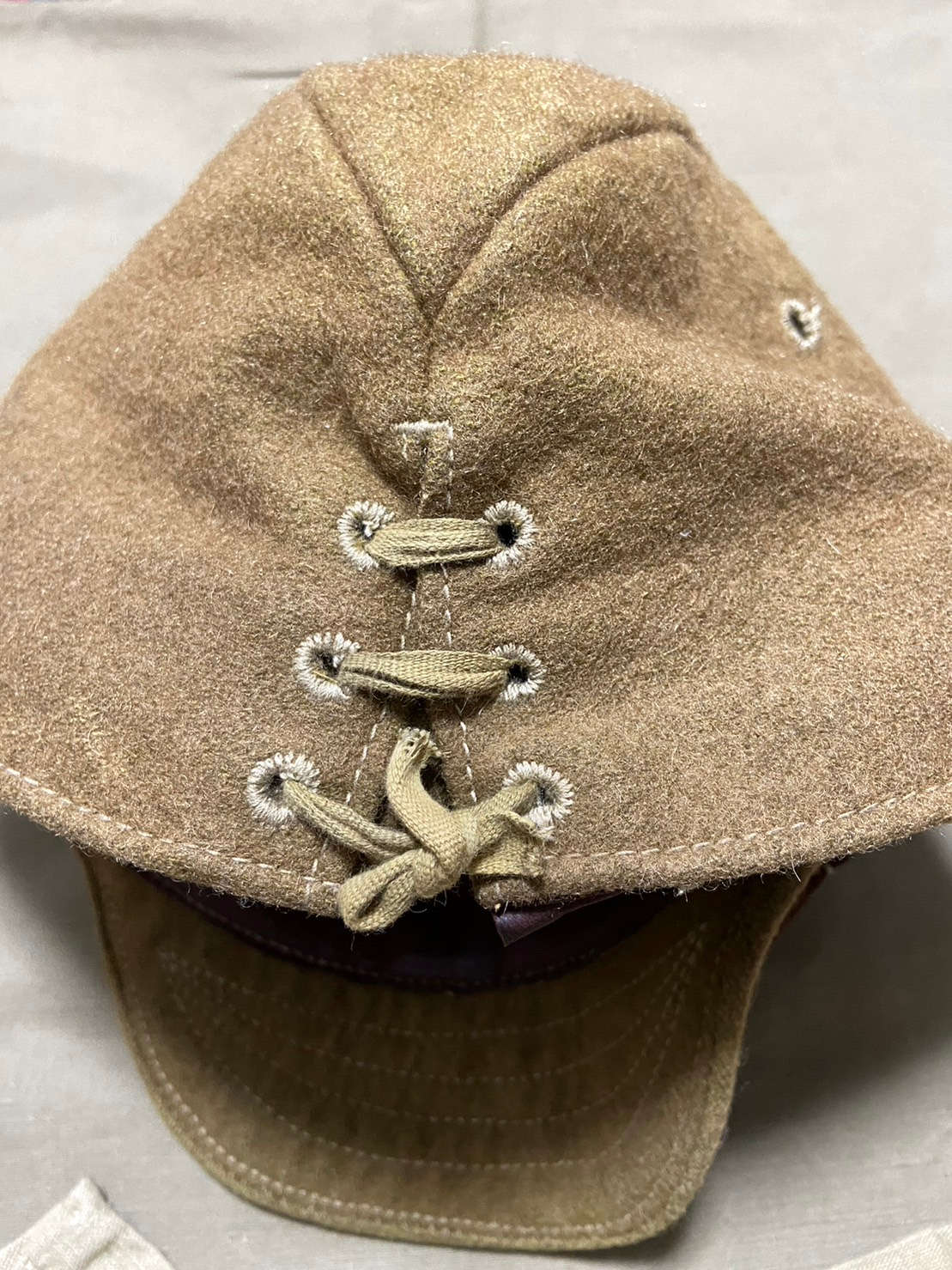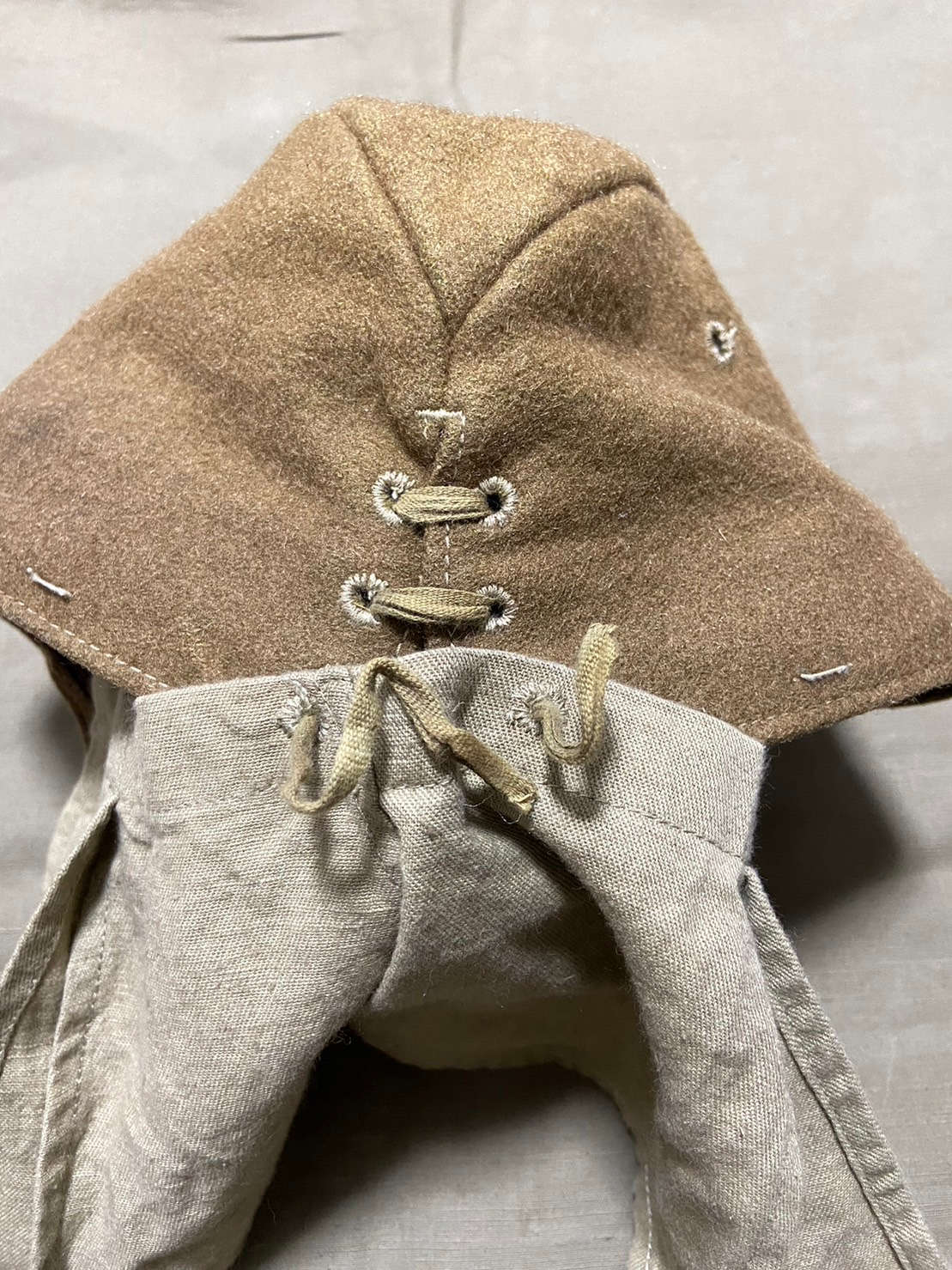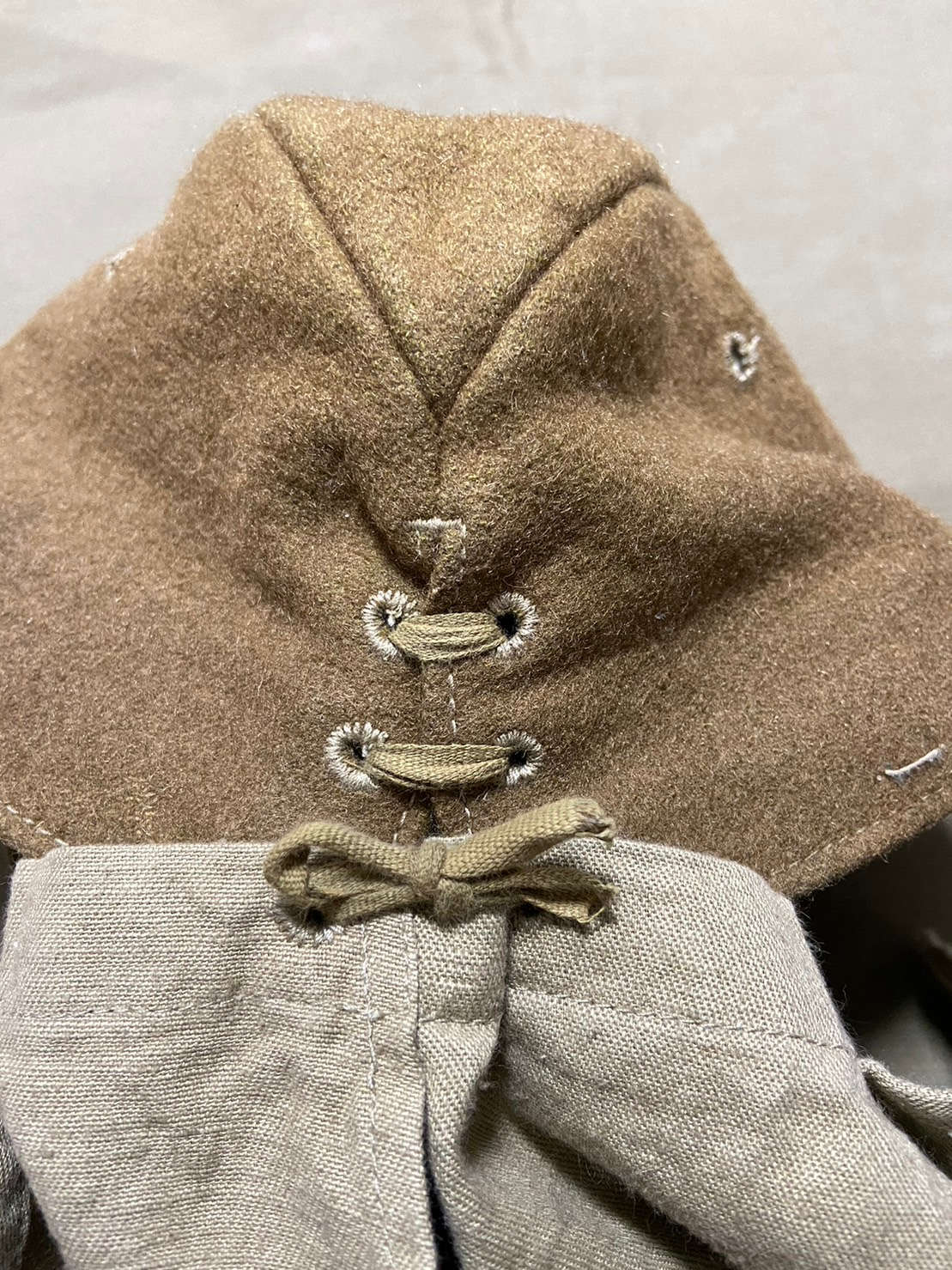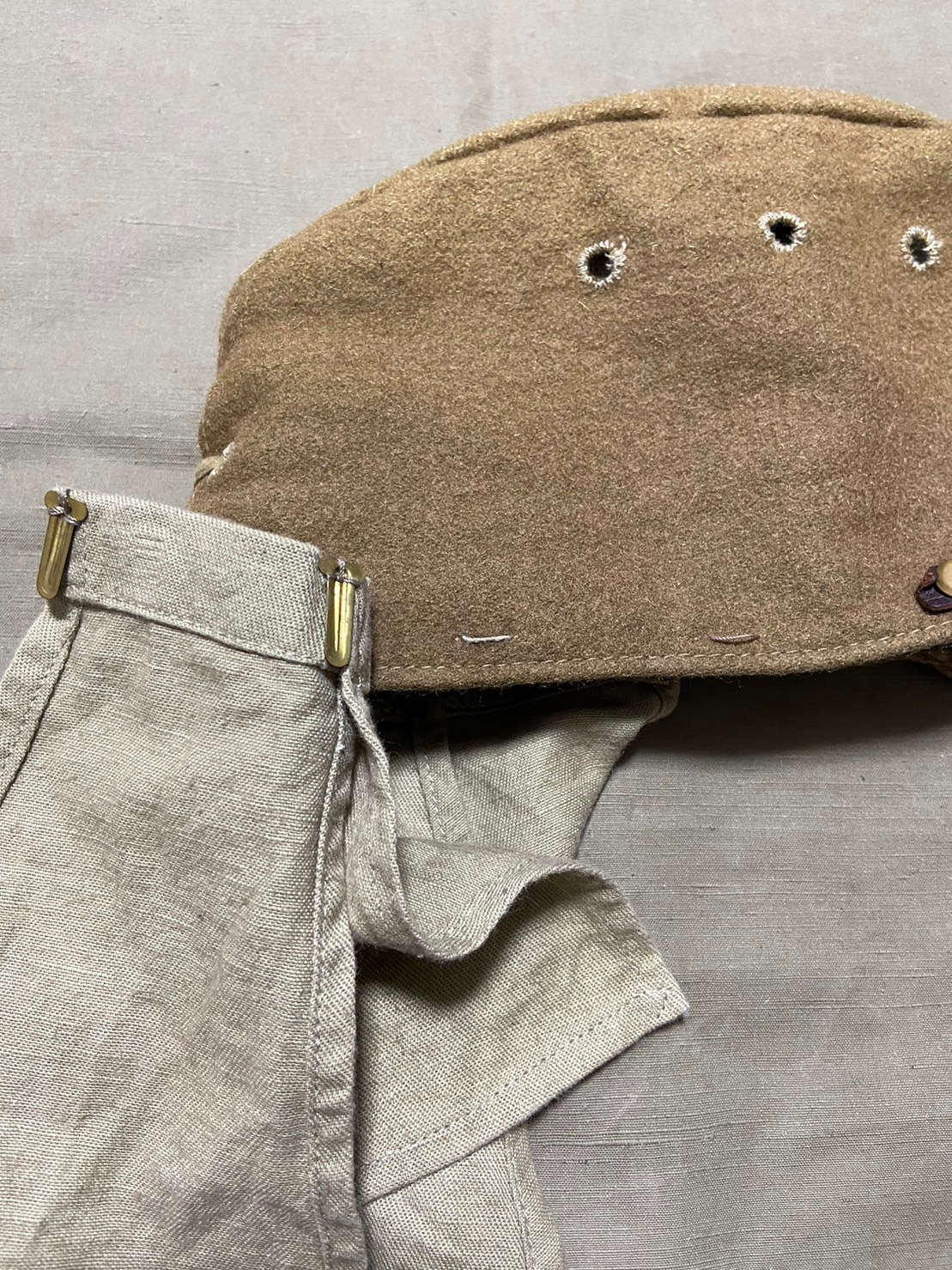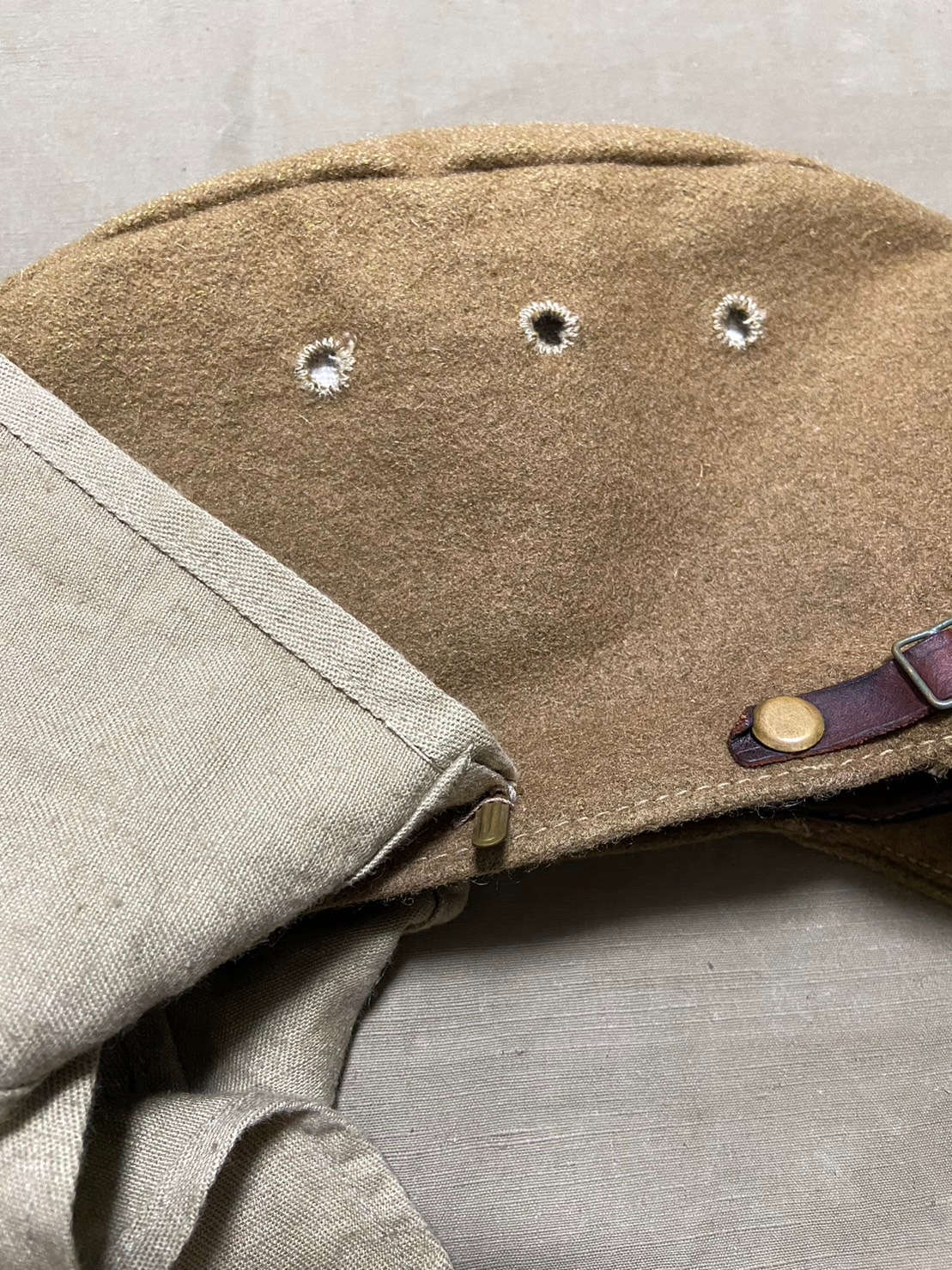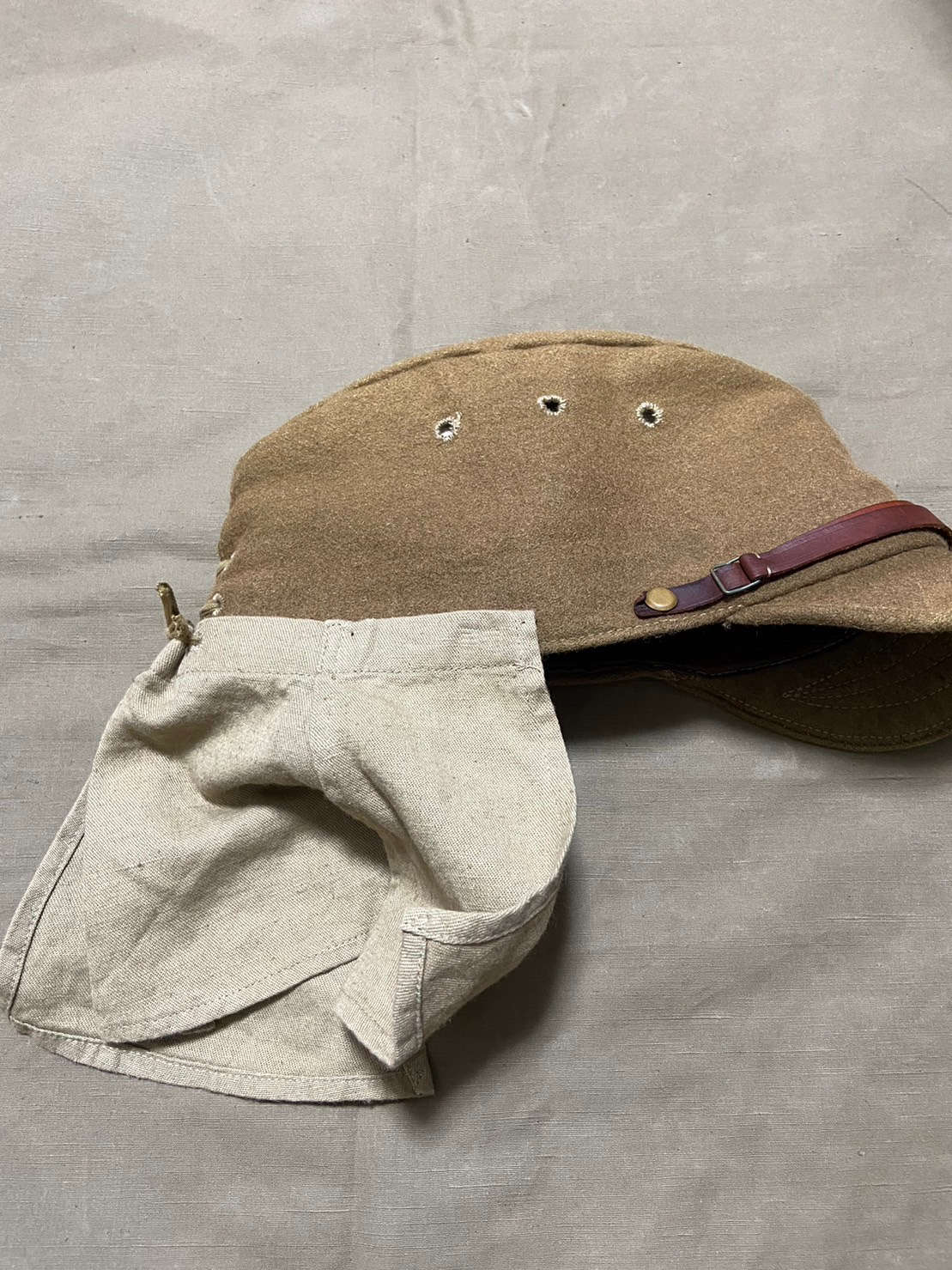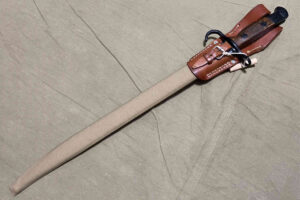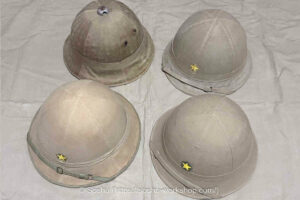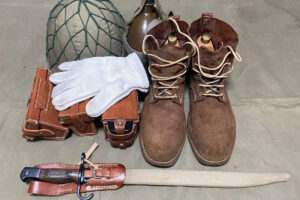One of the essential items of clothing for Imperial Japanese Army soldiers when assembling their military attire is the Field Cap (Ryaku-bō/略帽). Particularly during the Greater East Asia War period, decorative military caps disappeared from the battlefield, and soldiers began to wear field caps.
In the Japanese military, the field cap was not only worn outdoors but also served as an undercap when wearing a steel helmet, making it an essential item, second only to the military uniform.
During the process of establishing this field cap, various prototypes of field caps in different shapes were developed and actually tested by units in overseas territories. Furthermore, even after the field cap was standardized, there were slight variations, such as changes in the fabric from woolen cloth to a blend of materials or cotton, due to deteriorating wartime conditions.
In the Japanese military, even when new equipment is introduced, if there is old stock available, they will continue to issue it. Therefore, if you are particular about the historical accuracy of your equipment, having early-issue gear increases the likelihood of being able to adapt it to a wide range of military outfits from different periods. For example, if you have an early model field cap, it wouldn’t look out of place on both the Chinese front in 1940 and the Southern front in 1944. However, if you have a late-model field cap, it might not be suitable for replicating the 1940 Chinese front military attire. Some veteran soldiers intentionally continued to use older standard equipment to showcase their veteran status. Therefore, wearing older equipment is not a bad thing, as it can be a deliberate choice to highlight one’s experience and expertise.
Additionally, there are official issue field caps for non-commissioned officers and enlisted soldiers, as well as privately purchased ones for officers. In this article, we will be introducing the official issue field cap for non-commissioned officers and enlisted soldiers.
How to Get Field Cap
If you want to get a original field cap, I think it’s best to look on Yahoo! Japan Auctions or similar platforms. However, it seems that very few items in good condition are available. In particular, field caps tend to get dirty from sweat and, being made of woolen cloth, are susceptible to moth damage.
Even if you search on Amazon, you might come across Japanese military field caps, but I wouldn’t recommend them at all. They often have poor quality in terms of color, shape, and most importantly, they directly sew on the cap flap (Bōtare-nuno/帽垂布), which is not authentic.
Field caps are also available at stores like Nakata Shōten, HIKISHOP, and S&Graf, but I would recommend the replicas from individual sellers like Furutakaya and Nori. They are handmade one by one, so the price is about double, but the material and silhouette are excellent. Especially, the field cap is something you wear on your head, so it stands out. Wearing a good field cap can make you look sharper, and overall, your military outfit will appear more accurately recreated. It’s not a waste of money to invest in a high-quality field cap from the beginning, although it may be more expensive.
Recently, there has been an increase in cases where Chinese businesses and others produce imitation products of the high-quality replicas created by individual Japanese businesses and sell them cheaply, or even falsely claim their products to be from these Japanese sellers on platforms like eBay. These imitations often have lower quality. What’s more, if those who invest time and effort into developing and selling these products can’t sustain their businesses, it may lead to a future where only low-quality replicas are available. Please make sure to purchase the correct products through legitimate channels.
Early Type Field Cap (Made by Furutakaya)
This is a replica of an early type field cap manufactured in 1937 (Showa 12). The early type is versatile and suitable for various uniforms throughout the Greater East Asian War period.
You can purchase products from Furutakaya on Yahoo! Japan Auctions, but unfortunately, participating in Yahoo! Japan Auctions from outside Japan can be quite challenging. In fact, Furutakaya is an old friend of mine, and I’m currently in the process of creating an EC site that can be accessed from overseas for him. Once that is completed, it should be much easier for people outside Japan to make purchases.
Also he has a Facebook page where you can contact him directly .
Late Type Field Cap (Made by Nori)
A later model field cap has been reproduced here. You can see that the silhouette is different compared to the initial model made by Furutakaya.
In addition to the later model, Nori has also commercialized various types such as the initial model and prototype field caps.
This is the first one I purchased, and I’ve used it extensively outdoors. It’s developed a nice appearance, and I’m quite fond of it.
Since Nori’s products are primarily purchased through Yahoo! Japan Auctions, it may be challenging for people outside Japan to make purchases.
Field Cap Flap
This is how to attach the field cap flap.
- Undo the size adjustment cord located at the back of the field cap.
- Thread the size adjustment cord through the two holes in the center of the field cap flap.
- Re-tie the size adjustment cord.
- On each side, there are two loops for attaching the field cap flap. Insert the flap’s hook through these loops.
In reality, simply inserting the hooks into the loops for the flap may result in them coming loose with some movement. Therefore, it’s a good idea to secure them in place by lightly sewing them onto the flap with a thread.
Caring for the Field Cap
The field cap is something you wear on your head, so when you wear it outdoors and run around, you’ll inevitably get sweaty and may end up with sweat stains, and such. However, since the main material is woolen cloth and leather is used in various parts, you can’t just wash it easily. It’s my own way of doing it, but I’ll introduce you to how to take care of it.
Edge Leather Care
“Edging leather” is the leather that goes all around the inside of the cap. Sweat tends to accumulate here while wearing it, so make sure to wipe it off thoroughly with a towel, etc. Also, before and after use, apply leather oil to prevent the leather from becoming stiff.
Wiping off Sweat Stains
People who sweat a lot may develop sweat stains or salt deposits around the base of the visor. To address this, use a well-wrung towel or cloth to wipe it clean.
When the Field Cap Inevitably Starts to Smell (1)
When the field cap inevitably starts to emit a distinct odor after regular use, the first step is to remove the cap’s liner for washing. With replicas from sellers like Furutakaya or Nori, the liner is typically secured in place with stitches in several spots. By cutting these threads, you can easily detach the liner for washing, as it’s designed to be washed.
When the Field Cap Inevitably Starts to Smell (2)
In cases where the odor seems particularly stubborn, you can try using steam. Applying high-temperature steam can help capture and evaporate the odor molecules clinging to the cap. However, be aware that this process can disperse the odor molecules throughout the room, creating quite a mess, so be sure to do it with good ventilation.
Having a garment steamer can be extremely useful for this purpose. I also use it to stretch out wrinkled military tunics and trousers. However, it’s important to exercise caution. If you direct high-temperature steam onto the edge leather or chin straps, the leather may shrink. So, be sure to proceed with great care.
